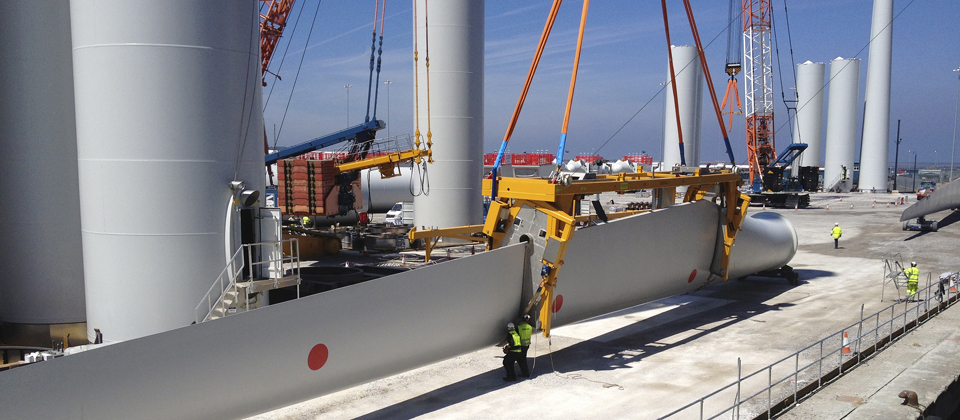
24 hours to dock, load and sail. 12 hours to get into position and install. 24 hours to commission. In at least 12 m/s of wind speed. We asked turbine manufacturer Siemens Wind Power how it is addressing the last element in A2SEA’s vision.
Henrik Fomsgaard Lynderup, Head of PLM (Product Lifecycle Management) Offshore Logistic at Siemens Wind Power A/S, is working to put the pieces of a rather complicated puzzle together. To do it, he needs to consider crucial trade-offs between performance, cost and safety. His company has been exploring new ways to install components at wind speeds of 12 m/s and above – and there are plenty of factors to think about.
“This is an area with increasing focus,” says Henrik. “Both from within our company and from our more experienced customers.”
Over the years in offshore wind energy, Siemens Wind Power has typically focused on optimising individual processes, such as how to quickly install a tower or mount a blade in as little time as possible. Such operations are now relatively smooth and fast and there is currently little room for further optimisation.
“Now, we’re also exploring ‘wasted’ time,” says Henrik. “Making sure that we aren’t a bottleneck in the installation chain.”
“With new, more efficient vessels that can sail, position and jack up in harsher weather and at greater wave heights, the game changes somewhat. If you’re jacking up in two-metre waves, what are the likely wind speeds and what do those speeds mean for installing components?”
Two-metre waves roughly equate to 12-14 m/s of wind speed. So that’s a target Siemens Wind Power has set for now. With the present limitations of installation vessels, there’s little point to investing in equipment or processes to handle speeds above this level. In fact, the company’s current analysis of weather data reveals that there is a lot to gain from going from 10 to 12 m/s, a little less to gain from 12 to 14 m/s, and hardly anything above that.
So how does Siemens Wind Power propose to lift installation wind speeds?
“It’s a difficult balancing act,” says Henrik. “We’re not fundamentally changing the methods we have successfully developed and refined over time. For example, the tower is lifted in basically the same way, although with the new vessels we can lift it in one piece. It weighs around 400 tons and we can lift in 14 m/s. Speeding up the operation reduces installation costs, but clearly increases safety risks. And as safety has the highest priority, we make no compromises in this respect. So, at first glance, increasing wind speeds and improved safety may seem contradictory, but our solutions are designed such that these two factors work hand-in-hand.”
“The way forward is a lot about automation – moving further away from manual operations. Today, we have people rotating the tower manually, but for the new 6 MW turbines, we will control rotation using automated tack lines rather than manual effort, providing better safety and better control at the same time. And the same principle of automation basically goes for all the components.”
Henrik does, however, add a note of caution: “By automating, you also increase the risk of system failure, so you have to find the right balance, automating yet keeping things simple, too. This is the tricky part, making solutions robust, simple and safe with the right performance.”
“Our philosophy is to build on our experience, taking as small steps as we can and making constant improvements just as we have since establishing the offshore wind industry in 1991.”
How windy is that?
A wind speed level of 12–14 m/s, in the context of offshore wind installation projects, is an average value taken over a 10-minute period. And that period may include sustained gusts of as much as 19 m/s. Just how windy is it? We’re talking about six on the Beaufort wind force scale. That’s where long waves begin to form, white foam crests are frequent and some airborne spray is present. On land, it’s time to take extra care that your umbrella doesn’t turn inside out!
Like this post? Subscribe now and get notified about new content!
